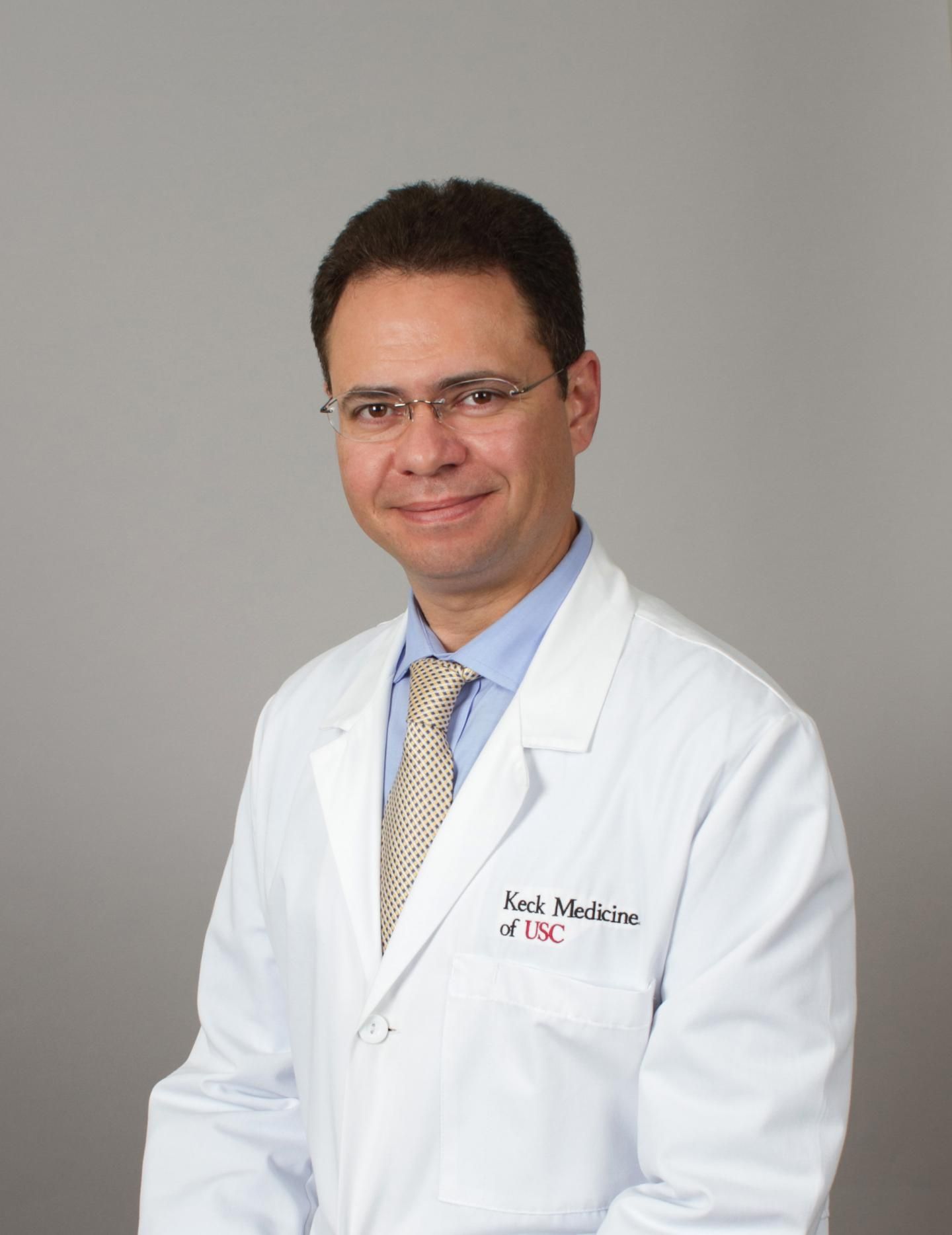Article
HIFU allows 91% of patients to avoid radical prostate cancer treatment for 2 years
Author(s):
The results suggest the minimally-invasive procedure is an acceptable alternative to immediate surgery or radiation.
High-intensity focused ultrasound (HIFU) ablation of the prostate showed “adequate” short-term prostate cancer control, indicating the minimally-invasive procedure is an acceptable alternative to immediate surgery or radiation, according to new research from USC Urology, Keck Medicine of USC.1
Among 100 patients with prostate cancer who received HIFU, 91% were able to avoid radical treatment for at least 2 years, according to the retrospective analysis, which was published in the Journal of Urology. Also, nearly three-fourths (73%) of patients did not experience treatment failure, and there was a 100% continence preservation rate.
Andre Abreu, MD

"This positive data empowers urologists to use focal HIFU ablation to effectively address prostate cancer without the intrinsic side effects of radical treatments," first author Andre Abreu, MD, urologic surgeon with Keck Medicine and an assistant professor of clinical urology and radiology at the Keck School of Medicine of USC, stated in a press release.2 "We hope this study encourages prostate cancer patients to talk to their doctor about all potential treatment options to ensure that they receive a personalized care plan that addresses their individual needs."
Between December 2015 and December 2019, 100 consecutive men received hemigland HIFU using either Ablatherm (EDAP TMS) or Sonablate 500 (SonaCare). The median patient age was 65 years (interquartile range [IQR], 59-70) and the median PSA at baseline was 5.9 ng/ml (IQR, 4.5-7.2). The median prostate volume at baseline was 34 cc (IQR, 27-46). Per MRI, 71% of patients had a PI-RIAD score ≥3. Eighty-five percent of patients had stage T1c disease, 12% had stage T2a disease, and the remaining 3% had stage T2b or T2c disease. Per NCCN definition, disease risk status included very low (8%), low (20%), intermediate favorable (50%), intermediate unfavorable (17%), and high (5%).
Treatment failure was the primary end point of the study. The trial design defined treatment failure as follow-up biopsy showing Grade Group 2 or higher disease, metastases, systemic therapy, radical treatment, or prostate cancer–specific mortality. Other outcomes measured included 90-day complications, International Prostate Symptom Score (I-PSS), and International Index of Erectile Function (IIEF).
The median follow-up period was 20 months. At 2 years, 91% and 73% of patients remained free from radical treatment and treatment failure, respectively. Also at 2 years, 90% of patients did not need repeat focal HIFU, and 76% of patients successfully avoided grade group 2 or greater recurrence.The only baseline disease characteristic associated with Grade Group 2 or greater recurrence was having bilateral prostate cancer at diagnosis (P = .03).
All 100 patients maintained continence (zero pad). The median I-PSS scores before and after hemigland HIFU were 9 versus 6 (P = .005), respectively. The median before and after treatment IIEF-5 scores were 22 versus 21 (P = .99), respectively.
Overall, there were 13 minor complications after HIFU, and no major complications. The minor complications were grade 1 neuropraxia (n = 1), grade 1 urinary retention/insufficient voiding (n = 7), and grade 2 urinary tract infection (n = 5). There were no cases of rectal fistula and no patients died.
Inderbir S. Gill, MD

"USC Urology is dedicated to refining cancer care through collaboration and innovation," senior author Inderbir S. Gill, MD, founding and executive director of USC Urology and senior author of the study, stated in a press release.2 "Throughout screening, diagnosis and treatment, it is important to balance accuracy and efficacy. Our physicians will continue working toward better methods to personalize that balance for every prostate cancer patient," added Gill, who is also Distinguished Professor and chair of the Catherine and Joseph Aresty Department of Urology, Shirley and Donald Skinner Chair in Urologic Cancer Surgery and associate dean for clinical innovation at the Keck School.
In an accompanying editorial published in the Journal of Urology, Massimo Valerio, department of surgery and anaesthesiology, Urology Unit, Lausanne University Hospital, Lausanne, Switzerland, wrote, “Since FDA clearance, this is the first US series reporting on [partial gland ablation (PGA)] using HIFU. Although this study has the inherent limitations of a retrospective analysis, the authors deserve credit for having quickly and safely adopted this technology in their program. This might serve as an example for novel centers implementing PGA.”3
References
1. Abreu A, Peretsman S, Iwata A, et al. High intensity focused ultrasound hemigland ablation for prostate cancer: initial outcomes of a United States series. J Urol. 2020;204;741-747. doi: 10.1097/JU.0000000000001126
2. Innovative, minimally invasive treatment can help maintain prostate cancer patients' quality of life. Published online September 8, 2020. https://bit.ly/3jUhfAf. Accessed September 8, 2020.
3. Valerio M. Editorial comment. Re: High intensity focused ultrasound hemigland ablation for prostate cancer: initial outcomes of a United States series. J Urol. 2020;204;747. doi: 10.1097/JU.0000000000001126
















